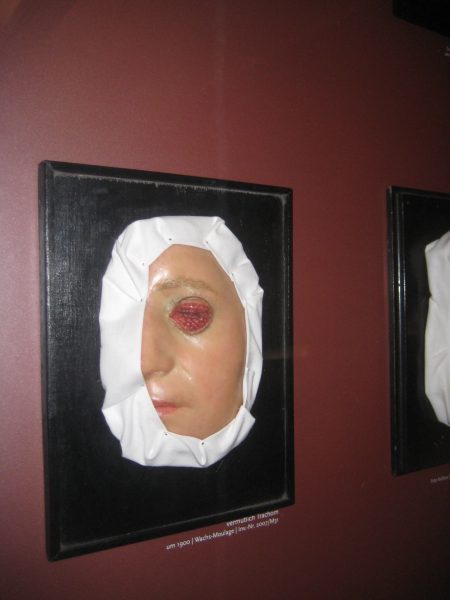
My obsession with wax began at an early age, mostly in the small fetish objects my mother brought with her from WW2 Germany. Old church candles with this Crayola Crayon “Flesh” color, and bee hive yellow honeycomb tones, plus the lucky pink Marzipan pigs sent to us from Germany back to New York for New Years Eve. I loved the texture and the material of wax and as I grew older I began to use it as an art medium for my sculptural work.
I worked in sculpture in 1980s New York and created various found object pieces mixing in wax with wood, creating apendages, and additions on to the wood using always this pink wax. Working with wax and molding is a divine act. Something ecclesiastical almost.
I was somehow always looking to create some part of the body. I had this need to render the corpus in wax and in perpetuity. Something that would last as the body surely would not.
I have always found the concept of the moulage fascinating. A moulage is a three dimensional realistically painted wax figure of pathological changes in the human body. Primarily used for documentary and educational purposes but now they have medical historical and museological importance. The moulage was a learning device used primarily in the field of dermatology, depicting various skin diseases. As a viewer you really can’t be too squeamish as they are quite realistic. Imagine a huge growth on the mouth, in all its detail, visceral and graphic, all made with wax and the skilled craftsman / moulage maker molding in all his glory in the 1850s and also all the way to the 1940s.
The first major dermatologic moulage makers were: In Germany, Heinrich Martens 1778 –1805, then Joseph Towne in London at Guy’s Hospital 1806-1879 and physician, Anton Elfinger 1821-1864 in Vienna.
Before this, the early wax modeling technique was known as “Anatomica Plastica”. One can find rich collections in Bologna and Florence. (Look for some later posting and a podcast on various wax moulage artists from Bologna.)
Germany has a strong history of moulage makers and collections from Munich to Leipzig to Munster. One can find them, but viewing is not readily available. Most are found in “teaching collections” found in the main university/medical section of most old universities all over Germany. So, I will be trying my best to visit these collections and report back what I find in the next several months.
In the 19th century, moulage was taken of medical patients for educational purposes. The prepared models were painted to mimic the original disease. If I could be a “moulage detective” I would want to know more about the people who made these pieces. There is not much out there in terms of who these “makers” were. I will be using this forum to investigate more and more, given time restraints, we will see! But my hunger is to find out the stories: what compelled these makers to work in this medium and how closely they worked with the person who had the disease! This is all so fascinating and mysterious.
The Medical Museum in Berlin displays a few wax moulage pieces but also had a rich history in moulage making.
I interviewed the amazing Thomas Schnalke, of the MEDICAL MUSEUM AT CHARITE, Berlin. He is incredibly well versed on the topic of the wax pieces and their placement in the museum. And he was extremely generous with his time to speak with me about the collection and this curious space within the University. Much thanks and appreciation to Herr Schnalke and all who I corresponded with who helped me speak to him.




Please listen here to the Podcast: Dr. Thomas Schnalke, The Berlin Medical Museum.

